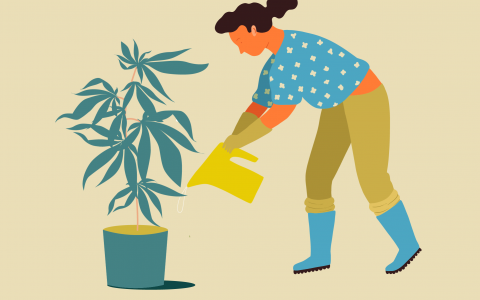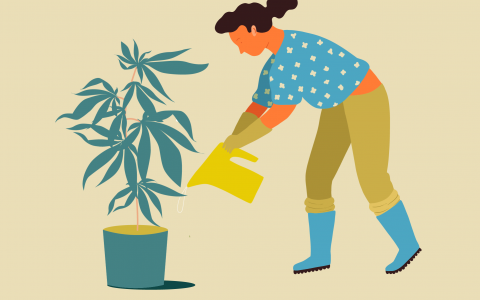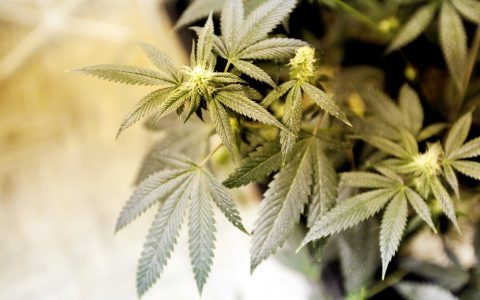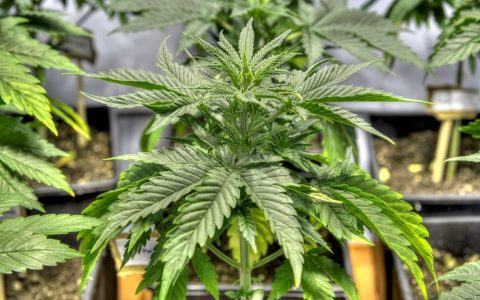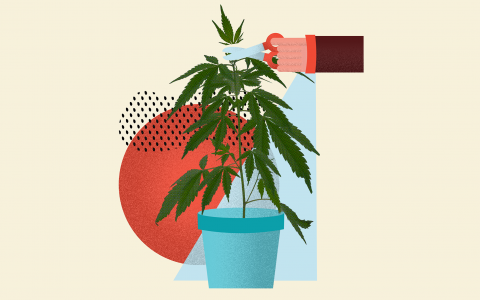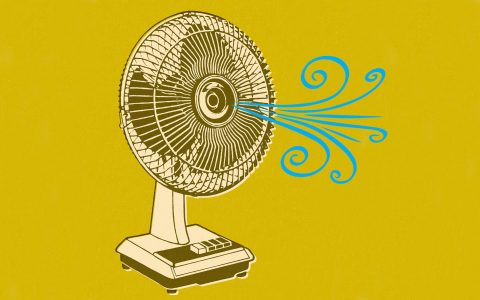You’ve been thinking about growing cannabis but the idea of growing indoors, without the sun, seems absurd. On the other hand, you’re pretty sure the unpredictability of Mother Nature will give you an ulcer. You also have nosy neighbors who might gasp at the sight and smell of cannabis. What to do?
A greenhouse might be the solution. Greenhouse agriculture is an effective way to produce high quality, high yield cannabis with a minimal carbon footprint. When properly cured, greenhouse cannabis can last more than a year.
(Sean Walling/Leafly)
Before You Build
Here are a few things to consider before you do anything.
Know Your Cultivars
Cultivar selection is an important part of any grow. Make sure you’ve done your research.
- Are you growing high-CBD or high-THC strains?
- Are you growing cultivars that are more prone to powdery mildew, or is your natural environment conducive to fungal growth?
- What are the plants natural resistance to pests?
“If you don’t know, ask the breeder,” says Chris Malott of Phyre Farms in Oregon.
Estimate Space for Full-Grown Plants
It’s not uncommon for cannabis plants to become six-foot giants or bigger. “If you want a monster-size plant with big yields, make sure you account for that in your greenhouse design. 12 feet at the apex of your greenhouse may not be enough,” says Stefani Malott of Phyre Farms.
You can also plant one row down the middle to avoid plants touching plastic. Michael Lupario of Western MA Hemp in Massachusetts warns: Too little headspace may cause the plant to touch the roof and condensation will do the same kind of damage as rain. Adjust the dimensions accordingly.
Consult Your Local Building Department
Find out what local permits may be required for your greenhouse. If your structure will have electricity, you will likely need a permit, says Noah Cornell at Aster Farms in California.
Know Your Environment
Greenhouses will face different environmental conditions in different regions. Talk to greenhouse growers in your area about environmental issues they face and how they deal with them.
Plan, Plan, Plan
Plan for harvest before you even start planting. Many growers work hard to produce the best possible crop through the growing season, only to have it ruined come harvest time. Major culprits: lack of labor and inadequate curing space.
You can’t dry and cure in your greenhouse because the conditions required for the two operations are incompatible. Be sure you have a separate space for all your harvested buds.
Building a Hoop House
Once you have all your materials, you can start building out the greenhouse.
The hoop house design is cheap, easy to build, and very effective (see animation above). It follows a simple concept: A set of pipes are bent into arches and erected to create half-circles, all at a set distance apart from each other, and are attached to a frame of base boards for stability. Plastic is then placed over these arched pipes to protect the interior, letting in sunlight and diffusing it for maximum coverage.
Basic Materials
Expect to spend between $300-400 dollars, depending on complexity and size. If you can reclaim old materials it’ll be even cheaper. Cost estimates are based on a hoop house of 12’ H x 12’ W x 12’ L, which can comfortably fit 6 cannabis plants.
You’ll need:
- Wood—cedar recommended—for base boards, 6 2’x4’s: ~$60
- 6 Rebar stakes, ½” diameter, 2’ length: ~$20
- Rubber mallet: ~$5
- PVC pipes:
- 3 at 1 ½” diameter, 20’ long: ~$60
- 3 at 1 ½” diameter, 12’ long: ~$30
- Plastic sheeting, 6 mil polyethylene, 24’ x 20’: ~$100
- Stapler and staples: ~$10
- Duct tape: ~$5
- (Optional) Landscaping fabric as shade cloth for a light deprivation setup: ~$100
Construction
- Find a level plot of land about 12 feet wide and 12 feet long. Make sure it faces south, where sunlight will be coming from throughout most of the day. It should not get any shade nor have any light obstruction from buildings nearby. Make sure the land has good drainage. Get rid of weeds.
- With a measuring tool, mark the corners of your plot.
- Build a rectangular frame with the wood boards over your site. Check to make sure the frame is squared up. This frame will add extra support to your entire structure.
- Using a mallet, pound the rebar stakes halfway (1’ deep) into the ground, at each corner and in the middle of the sides (6’ intervals for bigger structures).
- Slip one end of a 20’ long PVC pipe over a rebar stake, bend it, and put the other end of the PVC pipe over the rebar stake on the opposite side.
- Repeat with the other 20’ long PVC pipes.
- Add the spine—connect each arch to one of the 12’ PVC pipes at the topmost point of each arch. Attach with duct tape.
- Take another 12’ PVC pipe (this is a crossbar) and tape it to the arches about halfway between the ground and the spine, or 5-6’ from the ground. In a bigger, sturdier structure, you can use wood and these are called hip boards.
- Attach the second crossbar to the other side.
- It’s time to put on the plastic. This step ideally requires three people. Do it on a warm day so the plastic can stretch.
- (Optional) A word of caution: The off gassing of PVC pipe causes premature deterioration of any polyethylene plastic when in direct contact. To avoid this, apply polyethylene tape (white duct tape works) to the area where the PVC meets the greenhouse plastic. Or wrap an old piece of greenhouse plastic around the PVC before installing the plastic.
- Lay the polyethylene sheet appropriately over the structure and staple it to the base boards. The plastic should be tight enough to prevent sags or billowing when air goes through it.
- Leave some plastic on the ends like a curtain, so you can clamp it closed or lift it as needed for ventilation.
- (Optional) If you decide to use a shade cloth for a light deprivation setup, cut a piece the same size as the plastic sheeting, big enough to cover the entire structure. When putting it on daily, use a set of metal spring clamps to attach it to the arches.
Controlling the Environment
Building an effective greenhouse is not only about building a structure, but about creating a nurturing ecosystem. For that, you have to make sure your greenhouse controls airflow, temperature, and humidity.
Airflow
It’s important to keep air moving through your structure to prevent mildew. A ventilation system can be installed at various levels of complexity and cost.
In a dry and breezy climate, you can roll up the sides of your greenhouse, from the base boards to the hip boards.
In a humid climate, place stationary or oscillating fans, usually in each corner. Bigger, sturdier structures can support intake and outtake fans. The intake fan should be at one end of the greenhouse and low to the ground to bring in cool air, while the outtake (exhaust) fan should be high up so it pulls out hot air.
Temperature
Use thermometers to check your temperature regularly, ensuring it stays between 68-77°F (20-25°C).
Humidity
Measure humidity with a hygrometer. If it’s getting too high and you’re already letting in air, you can remove some large fan leaves from your plants to reduce transpiration. Young plants react better to humidity and usually need 60 to 70 percent. As the plant matures, it’s best to aim for 40 percent.
Finally, Relax and Enjoy!
Don’t get locked into the belief that you need your plants to exist in this perfect range of temperature and humidity all the time. Cannabis is a hardy plant and some variance in temperature and humidity is OK.

